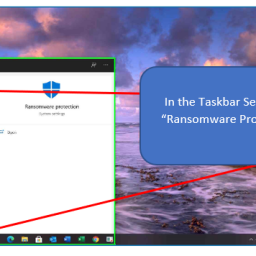
Casio ransomware due to phishing.
Hopefully Casio didn’t pay the Ransom. If Casio hasn’t verified that backups are working and available to be used to restore vital data they are going to be in trouble unfortunately.
Sounds like an employee clicked on a phishing email resulting in the leakage of 6,456 employees PII.
Casio said – “The investigation revealed that the cause of the incident was a ransomware. Despite Casio’s efforts to strengthen system security in response to the recent increase in cyberattacks, there were some deficiencies in the company’s measures against phishing emails. Casios global network security system, including its overseas offices, was unable to counter the cunning ransomware attacks from overseas”.
Casios ransomware breach is a stark reminder of why employee training and awareness in cybersecurity is vitally important. Intercepting phishing emails can not rely on just antivirus software. Advanced technologies in EDR, MDR, XDR, and NDR need to be deployed from a company like SentinelOne or Crowdstrike. The exploit of the “human factor” is always going to be the most difficult to defend against. A culture of vigilance needs to be established through advanced employee training and awareness campaigns of what to look for are incredibly important. A culture of constant vigilance will ensue as training and awareness is indoctrinated through out Casio.
Phishing happens when attackers convince victims, like small to medium business owners and their employees, to interact with harmful links, emails or attachments that could give hackers access to information or infect devices with malware.
In fact, most successful online attacks begin when someone clicks and downloads a malicious attachment from an email, direct message or social media post. Criminals can use stolen credentials to log into sensitive accounts to access data or money. Phishing can also result in an employee unwittingly downloading malware that damages systems or installs ransomware that holds systems captive.
So how do we counteract Phishing? Follow these simple steps to create a culture of cybersecurity vigilance.
- Train employees how to spot phishing – Employees should be trained to look for basic signs of phishing emails such as strange or unexpected requests, often using alarming language or urging immediate action.
- Alert employees to the risks – keep employees up to date on the current events related to cybersecurity. Provide regular updates and messaging to continually remind employees, customers and vendors to watch out for communications that may seem legitimate but aren’t. If they are not expecting communication or receive something that seems off, they should check with supervisors through known channels.
- Develop a culture of awareness – Don’t just count on once-a-year training to be enough. As a leader, enforcing online safety practices starts with you! Adopt a culture of cyber responsibility. Commit to making your business safer by regularly reinforcing “cyber hygiene” like you would other workplace policies. Be sure employees know how and to whom to report suspicious emails or phishing attempts.
To read more about Casios Ransomware click the link below:
https://world.casio.com/news/2025/0107-incident/
Visit our cybersecurity blog at: http://www.topgallant-partners.com/blog
.
0image sources
- Casio Watch Image: Photo by Ahmad Ramlee





